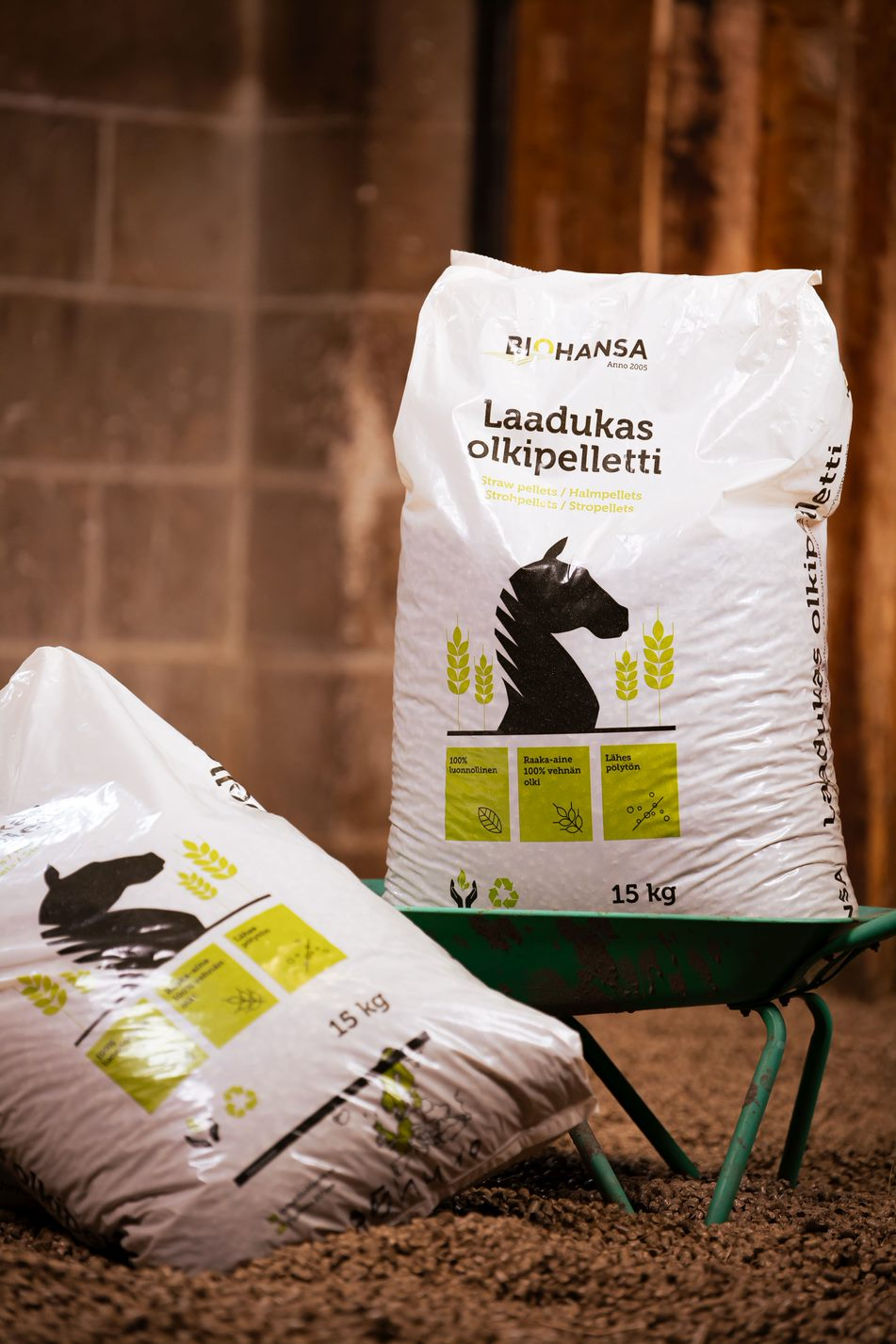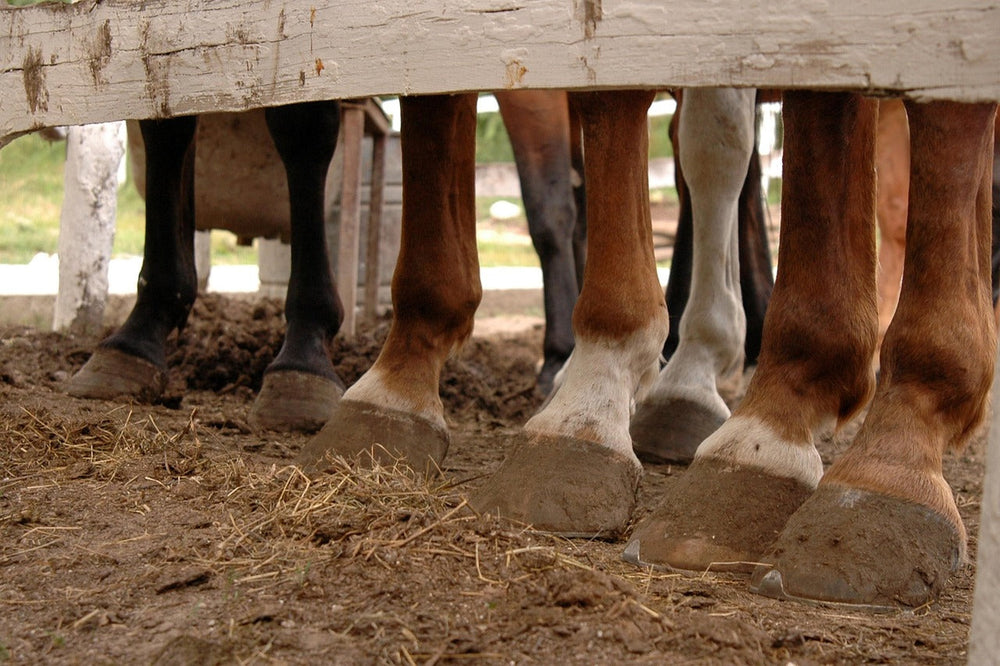The importance of hay in feeding
In addition to being the most important part of a horse's diet, hay also contains important nutrients such as calcium, phosphorus, and vitamins A and E. These play a significant role in the horse's growth and well-being. Hay-based feed products offer numerous advantages, as these products provide hay in a concentrated form. This in turn makes it easier to meet the horse's nutritional needs. Hay-based feeds are available in different forms, such as pellets, bales and silage, depending on the feeding and conditions.Examples of hay products:
Hay pellets and alfalfa pellets Hay pellets are compressed into a compact form from finely ground hay. When swollen in water, they offer a convenient feeding option, especially for older horses that already have dental problems or are at risk of blockages in the esophagus or elsewhere in the digestive system. Hay pellets are highly digestible and can be easily mixed with other supplementary feeds. They also have a longer shelf life than traditional baled hay, making them a practical choice for storage. Alfalfa is also a pelleted hay feed, but its raw material is alfalfa. Alfalfa is rich in protein, fiber, amino acids, minerals, and vitamins. Biohansa alfalfa helps prevent stomach ulcers and reduces the risk of respiratory diseases. It contains, among other things, beta-carotene, biotin and vitamins A, B, C, D, E, K, P, and U. In addition, the minerals Ca, Fe, K, Mg and P. Alfalfa is also suitable for beef and dairy cows, sheep, goats, etc. Hay and silage Naturally, hay is the most common form of hay-based feed products. They are available in various sizes and shapes, such as round bales, small bales or square bales. However, the biggest challenge with bales is professional baling and proper storage. It is important to ensure that the quality of the hay is maintained during storage to prevent mold or other spoilage. Silage is a fermented form of hay that is produced by preserving the hay in, for example, plastic. This process preserves the nutritional value of the hay while improving its digestibility. In Finland, silage or hay is usually pre-dried and its nutritional value varies depending on, for example, the time of harvest, weather, feed batch or preservation. The price of a bale of silage varies depending on the region and season. Biohansa's new product for the autumn isDaily silage , which is packaged in convenient 20-kilo packages. This makes it easier to transport and store than large round bales. The recommended dry matter content of horse silage is 40–50% to allow the preservatives to work properly. AIV feed intended for cows is often too concentrated for a horse to digest.Tips for utilizing hay-based products
Even if you get enough roughage, you can supplement your diet with hay-based supplements. First, the stable should be fed with high-quality hay that is free of mold, dust, and weeds. Good quality hay ensures that your horse receives optimal nutrition and reduces the risk of respiratory problems. Feed your horse according to its needs. Take into account its age, weight, activity level and any other special characteristics. Although hay-based feed products have many advantages, the feeding should also be supplemented with other essential nutrients, such as vitamins, minerals and proteins, if necessary. It is important to understand that hay products are used in feeding specifically as a complementary factor. This is how their benefits can best be maximized. Discover Biohansa's feed products via this link . Remember to subscribe to our newsletter and follow us on social media to receive information about new products and current topics directly to your email. Also give us feedback on what topics you would like to read about on Biohansa's blog! Sources:
Silage and hay silage | Horse Information Center
Sources:
Silage and hay silage | Horse Information Center






